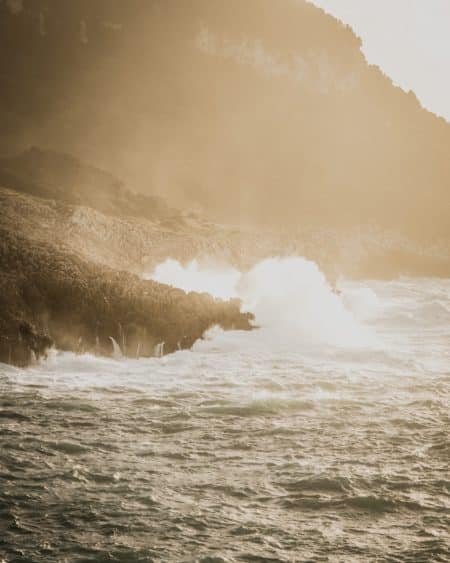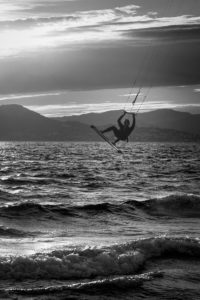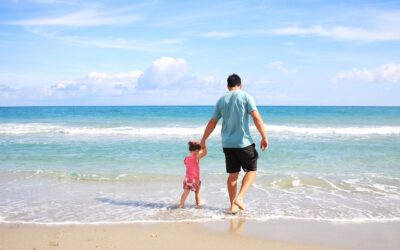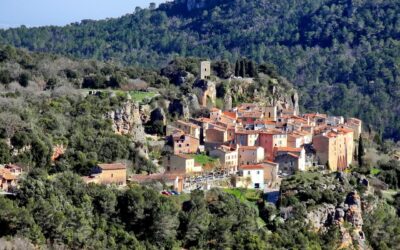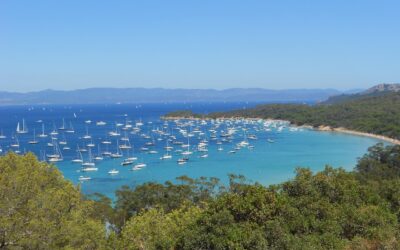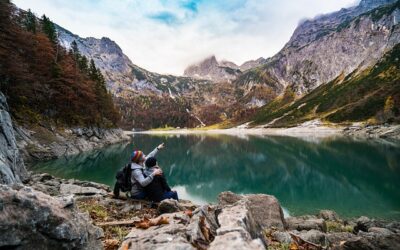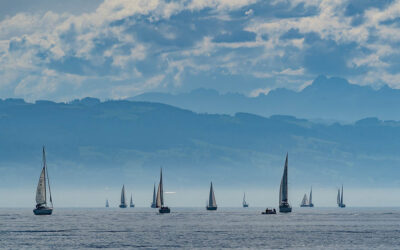The secrets of the beach of Almanarre: history and anecdotes
If you are from the Var region or have been on holiday in the south of France, you cannot miss the splendid beach of Almanarre. Five kilometres long, with white sand and turquoise waters, it is located along the route des salins and is the symbol of the Giens peninsula. But beyond its natural magnificence, the beach is full of secrets and legends.
Olbia: the ancient sunken city
While you are swimming in the Mediterranean Sea at the beach of Almanarre, or enjoying the acrobatics of windsurfers and other riders, a sunken city, more than 2000 years old, lies just a few meters under the waves.
Initially Greek before colonisation by the ancient Romans, this city was founded by soldier-colonists from Massalia in the 4th century BC. From the 1st century, the Romans invested the city and built a real port, thus developing commercial exchanges and the transfer of goods from all over the Mediterranean basin.
The beach of Almanarre in medieval times
The incredible history of the beach of Almanarre does not end with the ancient period. In the Middle Ages, nuns settled near the coast, in an abbey dedicated to their vocation, the Saint-Pierre de l’Almanarre abbey. Legend has it that during the Saracen attack in the 14th century, in order to keep their virginity intact, the nuns preferred to disfigure and ugly themselves to avoid having their purity scorned. They became known as the noseless sisters. Although there is no archaeological evidence of this, the story is part of local folklore. Moreover, many say that the name Almanarre comes from the Arabic al manara, the lighthouse.
The legend of the islands of Hyères
Rich in myths and legends, the beach of Almanarre is steeped in popular tales, including one that tells of the origin of the islands of Hyères. Centuries ago, long before the Romans took possession of the city, there lived a very rich king who was loved by his subjects. Olbianus had four daughters, each one more beautiful than the next. One day, while they were bathing in the open sea, an enemy ship came dangerously close to the girls. The king begged his daughters to return to him as soon as possible. Unfortunately, the beach was too far to swim back. The king implored the gods to help him. So it was done, the three oldest changed into islands (Ile du Levant, Ile de Port Cros and Ile de Porquerolles). The youngest, in a desperate gesture, stretched out her arms towards her father. The peninsula of Giens had just been born.
The most coveted spot in the whole Var department
What makes the reputation of the beach of Almanarre, it is also that it is a formidable spot of kitesurfing and perfectly adapted, even to the most novice windsurfers. Moreover, if you wish to learn this fun and fashionable sport, the KGG school in Hyères offers you individual or group lessons to start or perfect your technique. The salt road offers you a unique panorama, favourable winds and a landscape worthy of the most beautiful postcards in the bay of Almanarre.
The old salt pans
The Pesquiers salt pans make up most of the Giens peninsula. They remained active until 1971, allowing many families to work there and producing 350,000 tons of salt per year. However, the activity ceased for good in 1995 and the old salt pans became a protected reserve for the local fauna and flora. They are commonly referred to as the “little Camargue” in reference to the salt pans of Aigues-Mortes or Salin de Giraud.
Moreover, the Salt Route which runs along the beach of Almanarre offers an unobstructed view of the salt marshes in the double tombolo linking the peninsula of Giens to the mainland.
When l’Almanarre was still wild: a history of fishing
In the past, l’Almanarre was not very touristy and was revealed in a wild and natural landscape. If you meet old fishermen or local residents, let them tell you about their fabulous fishing trip on one of the most beautiful beaches in the world.
Search
Catégories
Recent Posts
- Exploring Var’s Specialties: a Culinary and Sporting Journey
- Visiting Hyères: a Journey between Paradise Beaches and Historic Treasures
- What to Do in Hyères when it Rains: a Guide for Successful Days
- Exploring Must-Do Activities in Saint-Maximin-la-Sainte-Baume
- Exploring Var Tourism: Hidden Gems and Adventures
Suivez-nous !
